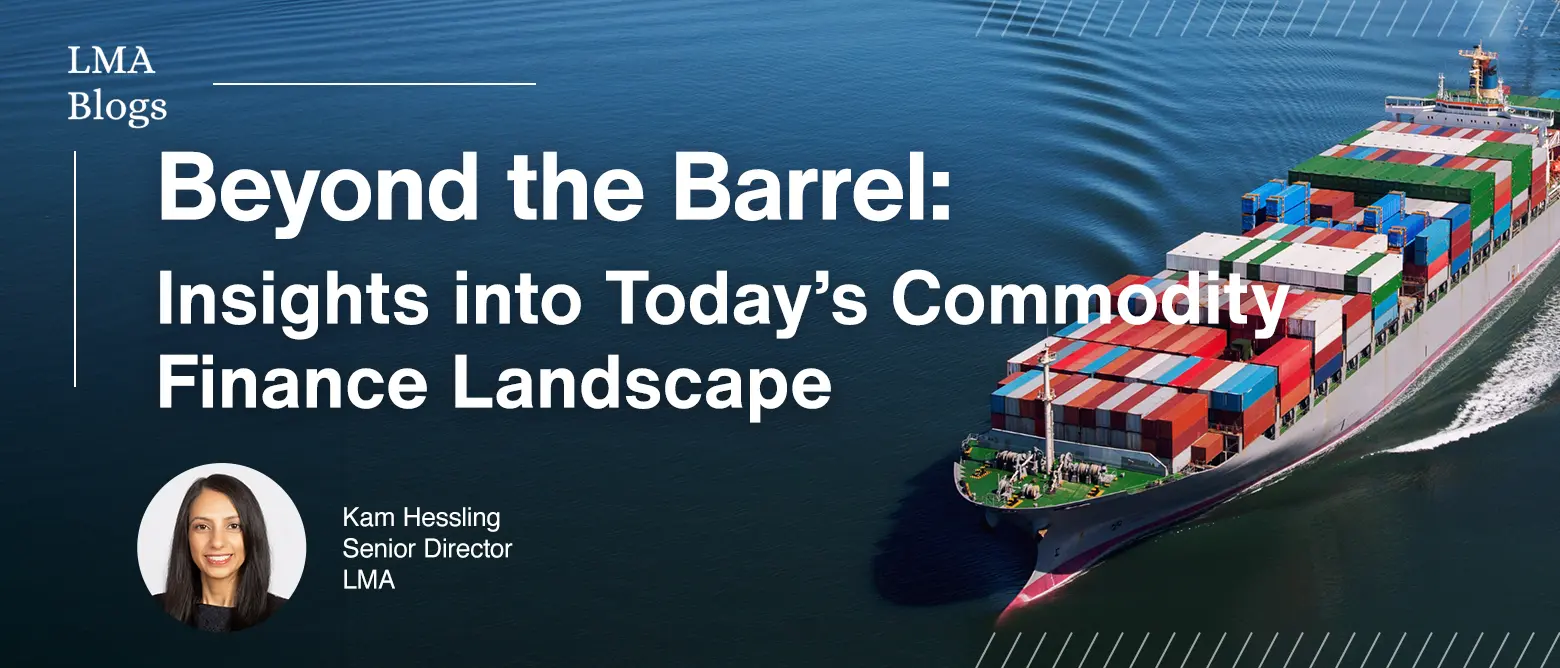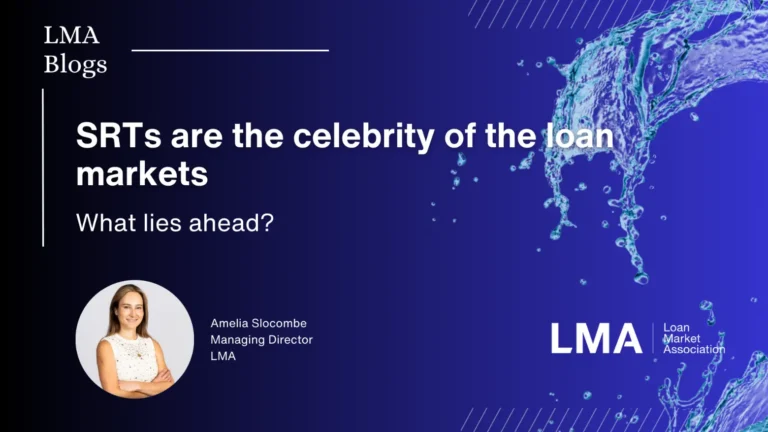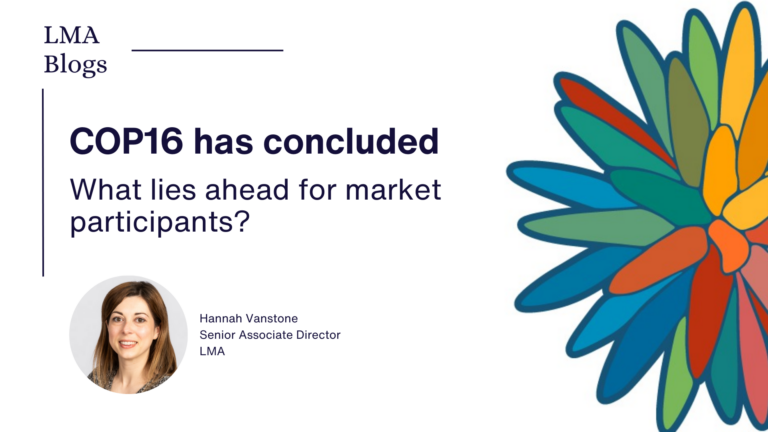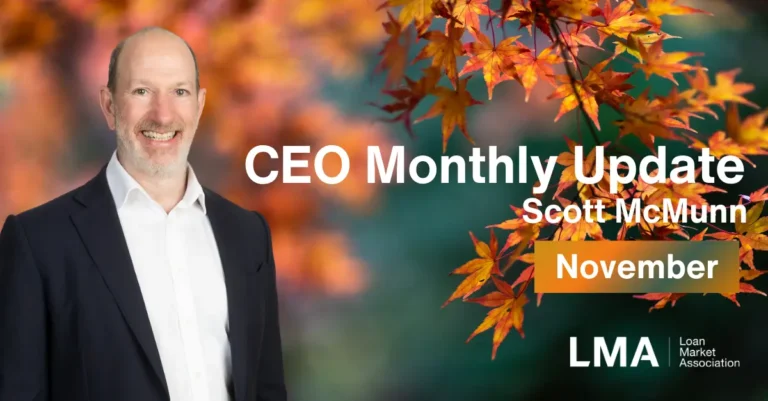Commodities finance is often in the spotlight – commodities are crucial, but the market is increasingly complex, demanding and geopolitically charged.
There were no shortage of topics to talk about at the LMA’s annual Commodities Finance Seminar on 10 October 2024. This event, hosted by Kam Hessling, Senior Director at the LMA, was designed to bring together senior stakeholders across the commodities finance market, including: banks, non-banks, traders, expert witnesses, insurers, brokers, data and technology providers, to discuss key trends and issues impacting the market.
In addition, the LMA hosted for the first time a Commodities Finance Roundtable on 11 October 2024 bringing together key trader, bank and non-bank perspectives to understand how the LMA can best support the market. Some key takeaways from discussions are highlighted below.
Where is the liquidity?
With a flight to quality, larger traders have built up significant liquidity. However, they continue exploring diversification options, including with ECA untied lending – this provides a useful source of additional capital due to its longer tenors. Yet, as the geopolitical tensions rise and the focus on energy transition intensifies, there is uncertainty around whether untied facilities may become more restrictive. Untied lending has been a focus for the LMA, highlighted by the publication of united lending guidance in June 2024 and ongoing discussions with the LMA’s Export Finance ExCo.
When it comes to liquidity sources, an interesting shift has taken place: US lenders are now second-largest contributors, behind France making up 13.4% of volumes from 2020 to H1 20241. Whilst the key commodities banks still dominate the structured space, a larger number of US lenders are coming into deals, albeit in more varied and smaller ways.
With banks focusing attention on the larger traders, mid-size traders are finding it harder to raise liquidity – this is where non-bank lenders are coming in. Although the short-term nature of the commodities finance market can make it challenging for investors to navigate, the low default rates offer a positive narrative for those considering this space.
How to navigate geopolitical events?
The market has certainly seen its share of geopolitical events, yet it has been resilient with recent tensions not having the anticipated impact on pricing. It seems like volatility is the name of the game and the market is taking the latest events in its stride. Having said that, geopolitics are making the world increasingly polarised, creating more barriers to trade and making it harder to move physical commodities– this impacts trade flows and infrastructure.
Looking ahead, geopolitical events will continue to influence commodities finance in unpredictable ways. As nations become more protective of their resources and trade policies shift, we can expect new regulations and sanctions to emerge, potentially reshaping supply chains. This means a greater need for risk management and innovative solutions to navigate these complexities.
Which commodities are hot and not?
Everyone is talking about sustainability, but oil and gas still dominates (although its share of overall volumes has decreased). Gas also continues to play a key role in the energy transition. Despite the key role of critical minerals to the energy transition, and no shortage of headlines, metals and mining is not as big a part of the sector as one might think. On a positive note, agriculture and soft commodities are on the rise.
Is ESG a dirty word?
With greenwashing a key focus, discussions around ESG have started to shift. Whilst some still see value in SLLs, others are focusing more on reporting and demonstrating sustainable without an SLL. With ESG feeling increasingly like compliance, it’s important that we do not forget the end goal of creating a more sustainable future.
Data collection is key to any ESG strategy, especially given the regulatory barrage facing what is a truly global market. Traders are stuck between a rock and a hard to abate place with the pressure being placed on them – but do they necessarily have the right levers to pull? The calculation of Scope 3 emissions is still looking like the wild west and establishing a common set of standards is crucial. However, it is also important to recognise that scope 3 is not the ‘be all and end all’ – it’s not always where the impact is to be had.
Where can it all go wrong?
We don’t often talk about when things go wrong, but it’s important to take stock of lessons learned so as not to repeat past mistakes. There were salutary tales from expert witness cases. What is clear is that a balance sheet analysis will not help you in this sector.
In good news for the LMA and for external lawyers, we heard that the LMA borrowing base template works and lawyers are key to ensuring documents stand-up to scrutiny. However, be warned – the practice of using pre-existing documents and adding bolt-on provisions places you at risk. Market players may understand the Frankenstein of a document created, but will the judge or arbitrator? We also learned that letters of indemnity are like confetti and not worth the paper they are written on.
Is technology changing the game?
Yes and no – it’s a process of evolution rather than revolution. The advent of traceability agents and digital borrowing base agents is helping to provide transparency and accessibility of data. Blockchain technology is being used to build traceable supply chains, deal with sanctions and comply with regulations. But there is still some way to go.
Technology is only as effective as the data it receives, and human expertise remains essential for identifying red flags. While technology has its limits—especially in areas like collateral inspection—it hasn’t yet reached a point where machines can fully take over.
How about the Electronic Trade Documents Act? Has much changed one year on? There is still a lot of talk around ‘reliable systems’ and not as much progress as perhaps first thought – but, there could be a breakthrough on the horizon. The LMA is also working with its Commodities Finance Working Party to include guidance in borrowing base documentation on the use of electronic trade documents in anticipation of this taking off.
Claims really do pay
The claims picture from an insurance perspective is a success story. However, insurance is a tool that needs to be understood and properly used. The market is reaching maturity but there is still work to be done. With cautious optimism on the impact of regulation and its ability to level the playing field, the key takeaway was of a market that is built on a partnership.
Where to from here?
The market is complex and continues to evolve. Understanding, trust and relationships are key. Through fostering relationships and building trust in the market, we can be in a place to facilitate discussions and tackle issues together. The LMA is pleased to be proactively working with the market to increase transparency, efficiency, liquidity and sustainability.
If you are interested in learning more about the topics discussed or the LMA’s work in commodities finance, please contact Kam Hessling at [email protected].




